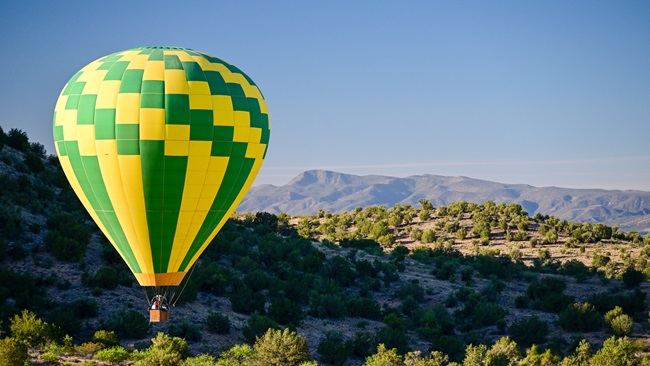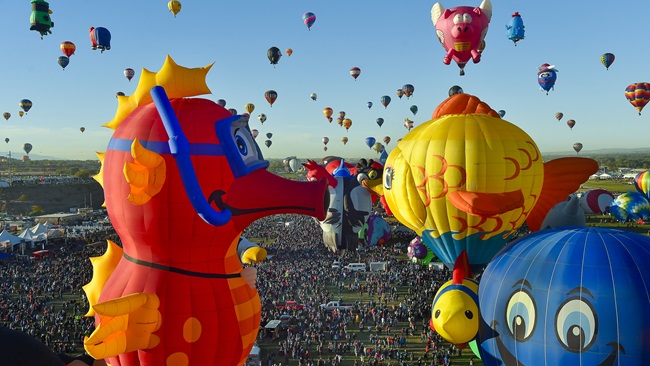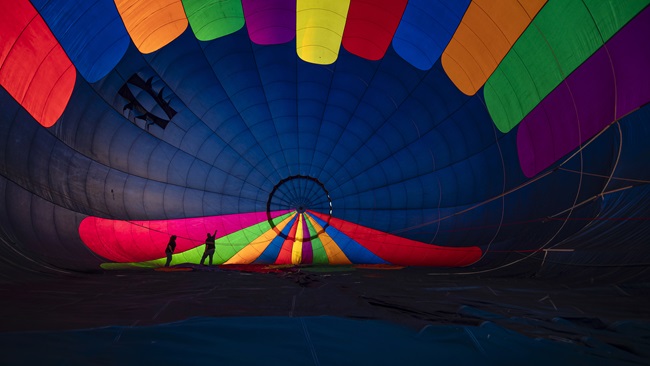1. From reader Ralph Britton: Douglas DC–7Cs, Lockheed 1049G Constellations, and other aircraft were powered by Wright R-3350 turbocompound engines. What did these 18-cylinder radial engines have in common with the two reciprocating engines that powered RMS Titanic?
2. Explain why rain entering a pitot tube during flight neither floods the airspeed indicator nor damages the instrument’s internal mechanism.
3. True or False: The Bell HU–1 Iroquois (“Huey”) was the world’s first production, turbine-powered helicopter?
4. According to the Federal Aviation Regulations, all aircraft are required to display position lights when flown at night. How are position lights arranged on a hot-air balloon?
5. From reader Stephen Rosenbaum: True or False: Many Americans suffer from triskai-dekaphobia (fear of the number 13), which is why no U.S. airline offers a Flight 13.
6. An aerobatic pilot enters a knife-edge turn to the left. While maintaining this 90-degree bank angle, his conventional turn indicator will show
a. a large turn rate to the left.
b. a large turn rate to the right.
c. either a left or right turn.
d. that the airplane is not turning.
7. Based on passenger count, Atlanta’s Hartsfield-Jackson International Airport has been the world’s busiest ever since the year 2000. What is the world’s busiest cargo airport (based on tons shipped in 2012)?
a. ANC (Anchorage)
b. HKG (Hong Kong)
c. MEM (Memphis)
d. PVG (Shanghai)
8. What is the difference between severe and extreme turbulence?
Answers
1. Engine exhaust was used to drive power-recovery turbines, a form of turbocharging. This enabled each Wright engine to deliver an additional 450 hp. Titanic’s pair of slow-turning (75 rpm), 15,000-horsepower engines recovered an incredible and additional 16,000 horsepower.
2. Air and rain do not flow through the pitot tube to the airspeed indicator. Instead, ram air compresses ambient air already in the pneumatic plumbing to increase pressure measured by the instrument.
3. False. First was the French Sud Aviation (Aérospatiale) Alouette II, which first flew on March 12, 1955. The Huey first flew on October 20, 1956.
4. A balloon is required to display only a single white position light that is visible from all directions. (All other classes of aircraft approaching a balloon would be overtaking the balloon as if from behind.) Required also is a single flashing-red or flashing-white anticollision light.
5. True. This also is why many airports do not have a Gate 13 and many airplanes do not have a Row 13. Similarly, many airlines will not offer a Flight 666 or Flight 911.
6. (d) A knife-edge turn is effectively a loop performed on a horizontal plane. Because the airplane is only pitching and not yawing, the turn indicator does not sense yaw and, therefore, shows a zero turn rate.
7. (b) 4,482,811 tons of freight were shipped from Hong Kong in 2012. Second, third, and fourth places went to Memphis (the hub for FedEx), Shanghai, and Anchorage, respectively.
8. Severe turbulence causes large, abrupt changes in altitude and/or attitude, and the aircraft may be momentarily out of control. Extreme turbulence makes aircraft control practically impossible and can cause structural damage.



